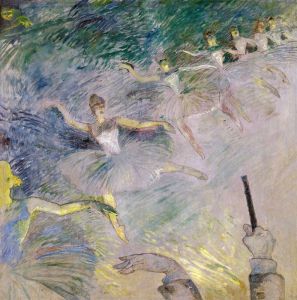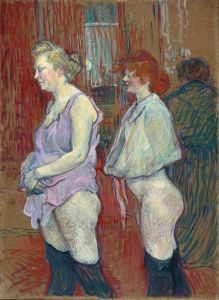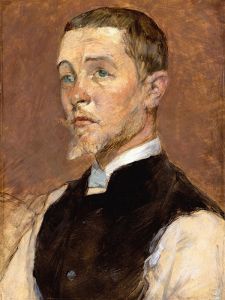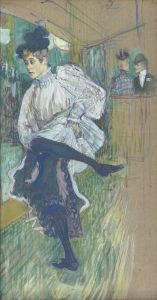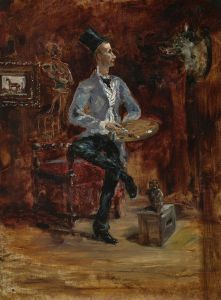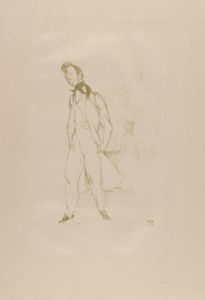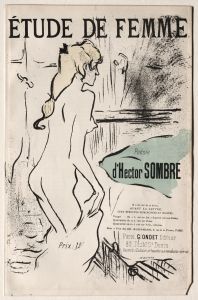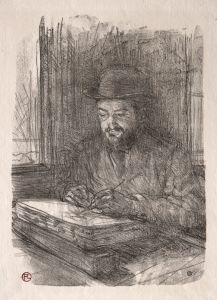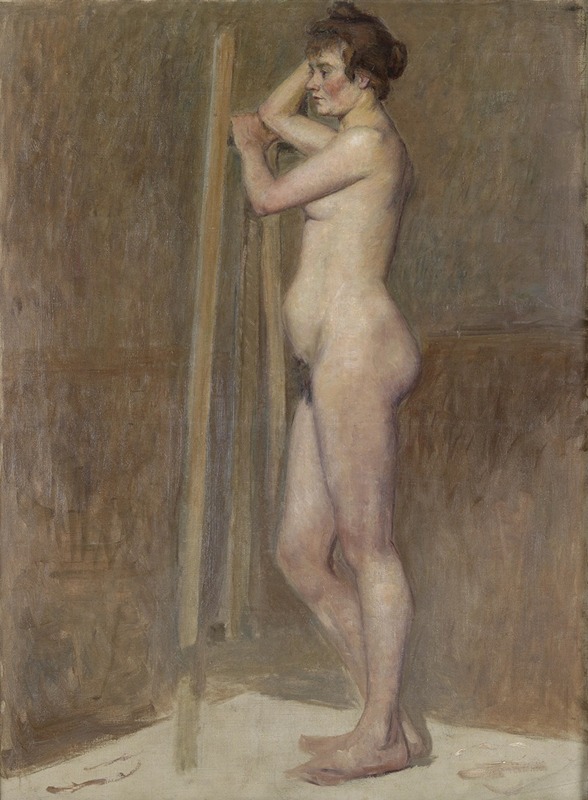
Nu dans l’atelier
A hand-painted replica of Henri de Toulouse-Lautrec’s masterpiece Nu dans l’atelier, meticulously crafted by professional artists to capture the true essence of the original. Each piece is created with museum-quality canvas and rare mineral pigments, carefully painted by experienced artists with delicate brushstrokes and rich, layered colors to perfectly recreate the texture of the original artwork. Unlike machine-printed reproductions, this hand-painted version brings the painting to life, infused with the artist’s emotions and skill in every stroke. Whether for personal collection or home decoration, it instantly elevates the artistic atmosphere of any space.
Henri de Toulouse-Lautrec, a prominent French painter and illustrator, is well-known for his vivid portrayals of the bohemian lifestyle in late 19th-century Paris. Among his extensive body of work is the painting "Nu dans l’atelier" (Nude in the Studio), which exemplifies his unique style and approach to capturing the human form.
"Nu dans l’atelier" is a testament to Toulouse-Lautrec's fascination with the human figure and his ability to convey emotion and character through his art. The painting depicts a nude female figure in an artist's studio, a common theme in art history that Toulouse-Lautrec approached with his distinctive perspective. Unlike the idealized nudes of classical art, Toulouse-Lautrec's portrayal is more intimate and realistic, reflecting his interest in the everyday lives and personalities of his subjects.
Toulouse-Lautrec was deeply influenced by the Impressionists, and this influence is evident in his use of color and light in "Nu dans l’atelier." He often employed a loose, expressive brushwork that captured the essence of his subjects rather than focusing on meticulous detail. This technique allowed him to convey a sense of movement and immediacy, drawing the viewer into the scene.
The setting of the studio in "Nu dans l’atelier" is also significant. Toulouse-Lautrec spent much of his time in the studios and cabarets of Montmartre, a vibrant district in Paris known for its artistic community. This environment provided him with a wealth of inspiration and subjects, from performers and dancers to the patrons of the nightlife. The studio setting in this painting reflects his immersion in this world and his desire to depict it authentically.
Toulouse-Lautrec's approach to the nude was also shaped by his personal experiences and physical condition. Born into an aristocratic family, he suffered from a genetic disorder that stunted his growth and left him with a distinctive appearance. This experience of being an outsider may have influenced his empathetic portrayal of marginalized individuals, including the models and performers who often posed for him.
"Nu dans l’atelier" is a reflection of Toulouse-Lautrec's broader artistic goals: to capture the truth of his subjects' lives and to challenge the conventions of traditional art. His work often blurred the lines between high and low culture, elevating the everyday and the overlooked to the level of fine art. This painting, like many of his works, invites viewers to see beauty and complexity in the ordinary.
Today, Henri de Toulouse-Lautrec is celebrated as a pioneer of modern art, and "Nu dans l’atelier" remains an important piece in understanding his contribution to the art world. His ability to blend realism with a keen sense of observation and empathy continues to resonate with audiences, making his work timeless and influential.







